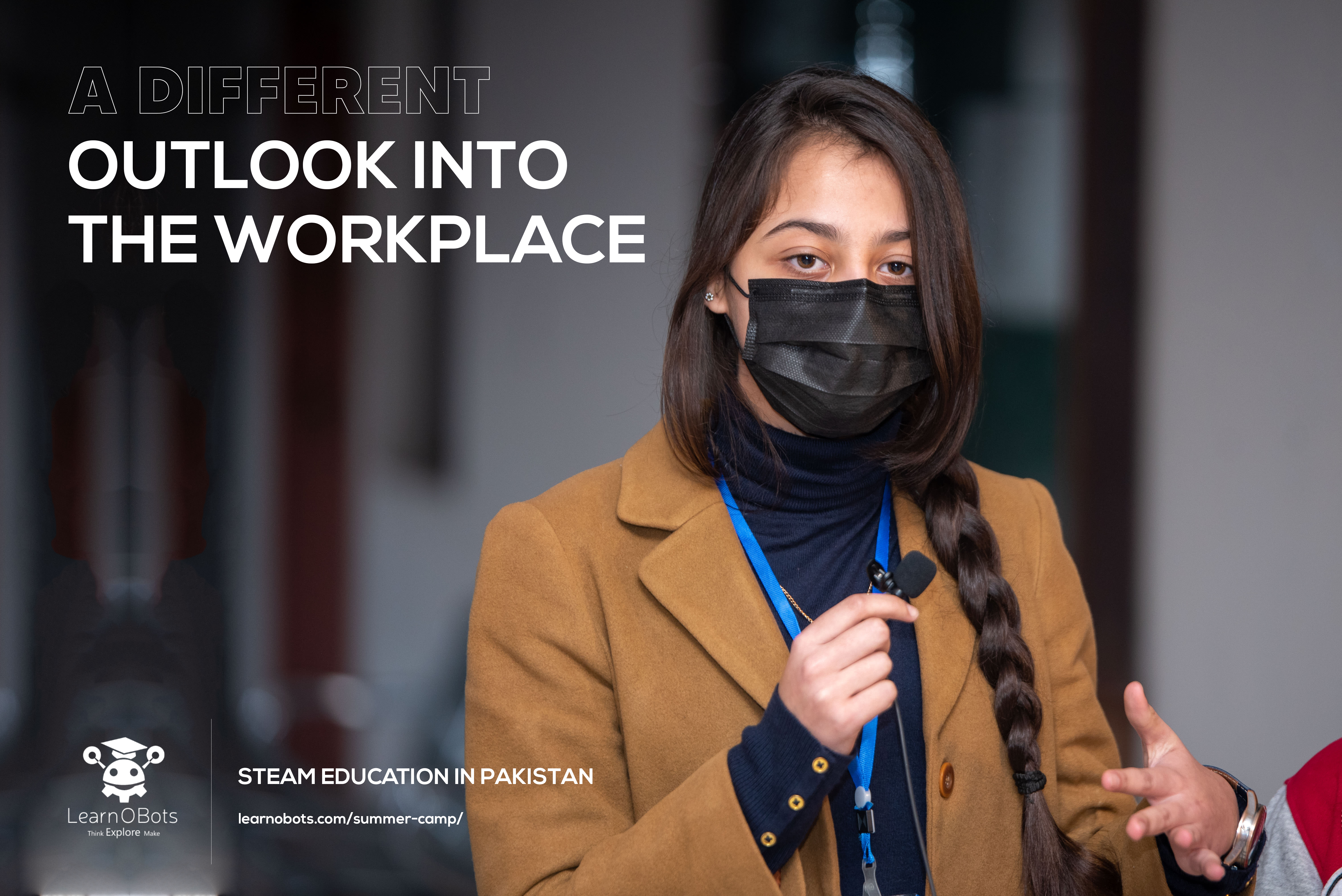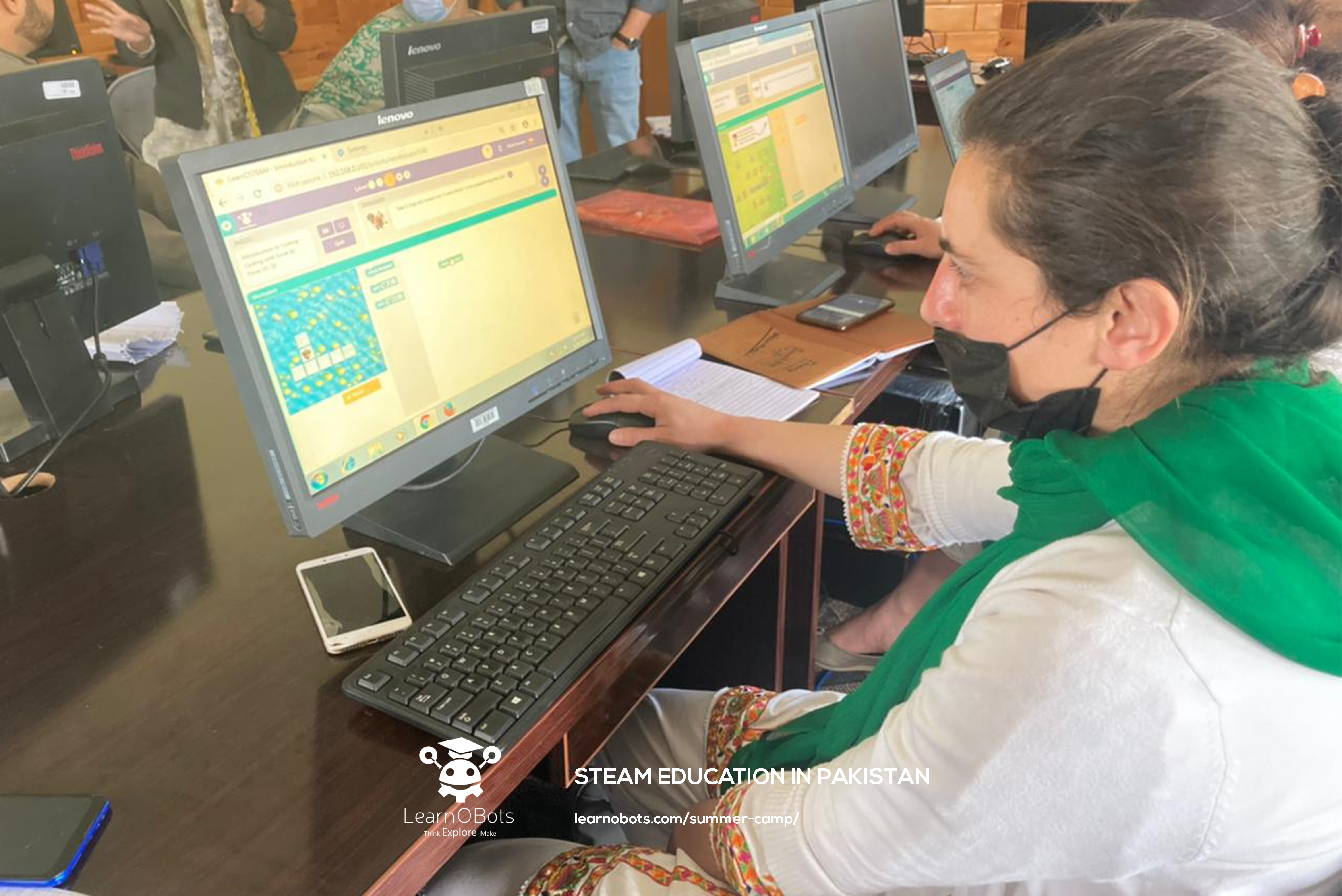Women in STEM
Education, Careers, and Mental Health
Take a glance at the world around you. The lights illuminating the room, the fan spinning overhead, and the screen right in front of you. Even the things you can’t see, like the internet, are all the marvels of modern-day STEM. STEM, as you may already know–stands for Science, Technology, Engineering, and Math. But what you might not be aware of, is that a woman first coined the term. Women in STEM have been there from the start.
Dr Judith Ramaley, the then director of the US National Science Foundation, came up with the acronym in 2001. She did so while working on a new and innovative curriculum that would equip children with skills needed for the future. In the two decades since, STEM has become a major part of education worldwide. LearnOBots, a startup founded in 2014, is working to increase the standard of STEM education in Pakistan. We do so by training teachers and engaging children directly through summer camps and DIY Robotics Kits. There is, however, a dark truth to STEM: women got left behind.
The Gender Disparity
Pakistan’s literacy rate for women and girls at 46.5%, is 13% less than that of their male counterparts. A report published by the World Economic Forum in 2020 ranked Pakistan as the third-worst performing in gender parity. In 2018, the Forum also found that women hold less than 5% of engineering jobs.
Pakistan, however, is not alone when it comes to this disparity. In the US, only 28% of the jobs in STEM are held by women. One of the major causes has been sexual harassment in the workplace. A similar issue plagues Pakistan as well, but for different reasons. Despite girls making up some 85% of medical students, only about half of them go on to practice medicine professionally. Pakistani parents often prefer that their daughters be doctors and their sons engineers. Most parents force girls to give up their careers for the sake of marriage. (As a side note, my mother ardently wanted a doctor daughter and an engineer son, and is still a little bitter that she got neither.)
It is clear that women face challenges at every turn, but why? The answer is multifaceted and complex, with several social and cultural factors contributing.
Identifying Causes
One of the ways how LearnOBots attracts kids to STEM is through our interactive games and puzzles because we believe in inculcating curiosity and creativity from a young age. A paper published by the Association of Psychological Science in 2015 supports our belief and has found that children who play with puzzles often have higher cognitive skills.
However, many girls never get this chance. Parents often prefer that their daughters play with dolls or kitchen sets, while their sons are encouraged to play with trucks, puzzles, and Legos. Moreover, many parents who may want to educate their daughters might, unfortunately, find themselves financially unable to do so.
In the West, sexist stereotypes are still prevalent. Women are overall more likely to receive a bachelor’s degree in the US and UK but are still less prevalent in the workforce. Many employers see women as inherently less valuable employees and pay them less
In 2019 the Food and Agriculture Organization Representative for Pakistan, Ms Miná Dowlatchahi, shared an anecdote with me. When she found out that she was being paid less than her male colleagues at her first job, she was furious. She recalled storming into her boss’ office but leaving almost in tears. Her boss blamed her for the pay gap, saying that she ought to have negotiated a better salary for herself.
Sexual harassment, as mentioned before, is an anathema rampant worldwide, and is a major reason why the idea of pursuing a career daunts so many women. One statistic shows that 93% of Pakistani women have been harassed.
Many women who do get into STEM careers are plagued by stress, self-doubt and imposter syndrome, which make them feel like they don’t deserve their success. These issues can evolve into depression and anxiety.
Solutions to Problems: the Future of Women in STEM
Judith Love Cohen, a NASA scientist who worked on the Apollo 13 mission, was solving problems even on the day she went into labour. She took a printout of the equation with her to the hospital and called her boss later when she solved it. Be it as scientists, mothers, sisters, or friends, women are adept at solving problems. And the problem of STEM is no different.
But to break barriers and shatter ceilings, men, women, and governments from around the globe need to work together. In recent years, the world has seen great advancements in women’s rights and education, but there’s still a long way to go.
In Pakistan, societies like the Women Engineers Pakistan have sprung up in recent years to promote and support female talent in STEM. Many workplace harassment laws have been passed in Pakistan, and it is up to the government to properly enforce them. Women like Nergis Mevalvala, Dean of the School of Sciences at MIT, and string theorist Tasneem Zehra Hussain act as role models to girls worldwide, especially in Pakistan.
Combating deeply ingrained stereotypes and stigmas is a daunting challenge, but is nonetheless surmountable. It was less than a century ago when most women couldn’t even vote, but the times have changed, and they keep on changing. Through the continued efforts of activists and governments, change is always possible.
How is LearnObots helping Women to pursue STEAM
LearnOBots is also actively playing a part in bridging the gender gap in STEM. We provide education to children irrespective of sex, and none of our activities, games, or camps discriminate by gender. Furthermore, we provide training and consultations to teachers and parents alike, so that we may combat stereotypes and give adults the proper training needed to nurture students in STEM.
Our goal is always to get more girls in STEM, or perhaps, it isn’t?. A study showed that countries with higher gender equality have lesser women in STEM. Women don’t go into STEM when the pay gap is smaller. The imbalance does not exist because boys in science or math outperform girls, in fact, the opposite is usually true.
Nevertheless, we at LearnOBots wish to give girls the power to choose for themselves. We are fighting gender inequality and sexual violence. The future is bright, but only if we make it bright. We hope we’ll have your support on our journey.




